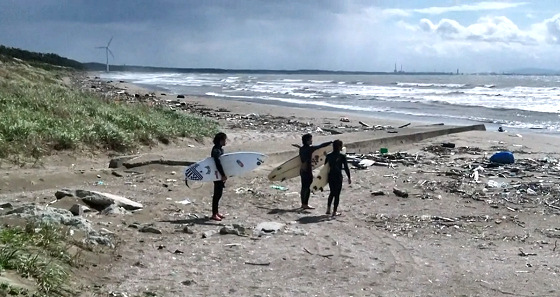A tsunami and a nuclear explosion have changed the lives of the Japanese surfing community.
"We Are All Radioactive" is an online crowd-funded episodic documentary about a group of surfers rallying to rebuild Japan after the March 2011 earthquake and tsunami.
One year after the tragic happenings, many small coastal towns in the northeast of Japan are still struggling with unanswered questions. Is our food safe? Is our water safe?
Lisa Katayama and Jason Wish have been delivering a series of webisodes about surfing, nuclear threats, and environmental destruction. "We Are All Radioactive" is an intense documentary that should be watched by the Japanese authorities.
The film crew follows a group of surfers and fishermen based in Motoyoshi, a coastal town 100 miles north of Fukushima, as they try to find answers. They shot half the footage, and the other half was filmed by the locals themselves.
Through interviews with locals, anti-nuclear activists, and global experts on radiation, filmmakers provide answers to fundamental questions about radiation and the complexities of disaster response on both a political and sociological level.
Post-production of the first four episodes was entirely crowd-funded by over 200 supporters from all over the world.
Learn how surfing in Fukushima is the memory of a dream.
